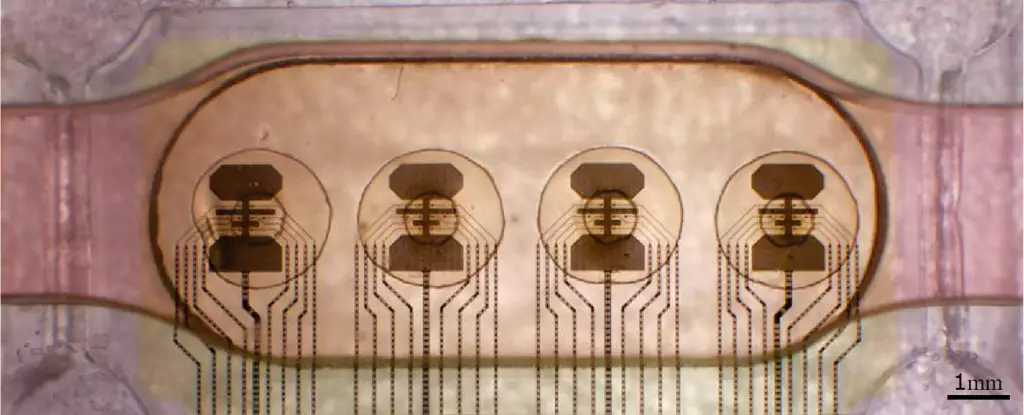In the quest to create artificial intelligence (AI) that mimics the human brain, computer scientists have faced the challenge of energy consumption. As artificial neural networks become more sophisticated, they require more power. However, a Swiss start-up, FinalSpark, has introduced a ‘biocomputer’ that utilizes living brain cells to achieve enhanced efficiency compared to traditional computers. This innovative approach taps into the energy-saving capabilities of nature’s design.
FinalSpark’s biocomputer connects to spherical clusters of lab-grown human brain cells known as organoids. These organoids are housed within arrays that connect to electrodes and a microfluidics system for supplying water and nutrients. This technique, termed wetware computing, leverages the cultivation of organoids in the lab, providing researchers with mini replicas of human organs for study. By integrating biological concepts into computing, FinalSpark aims to reduce energy consumption significantly.
The efficiency of FinalSpark’s biocomputer is evident when compared to traditional digital processors. The company claims that their bioprocessors consume a fraction of the power required by standard processors. For instance, training a large language model like GPT-3 on conventional computers can consume a vast amount of energy. In contrast, the human brain operates on minimal energy, showcasing the potential for energy savings in biocomputing technologies.
As the AI industry continues to grow, there is a pressing need for more energy-efficient computing solutions. The synergy between brain cell networks and computing circuits presents a promising avenue for exploration. FinalSpark is not alone in its endeavors, as other research teams have also experimented with connecting probes to biological systems and programming neural networks. These efforts aim to develop new computing approaches that are both energy-efficient and sustainable for the future.
FinalSpark’s biocomputer system offers researchers the opportunity to conduct experiments on brain organoids remotely and over extended periods. This capability opens up new possibilities for studying brain functions and testing various protocols relevant to wetware computing. The system is already in use by several research groups, with plans for further expansion and refinement in the future. The potential applications of merging brain cells with computing are vast, and the progress in this field is promising for both scientific research and AI development.


Leave a Reply